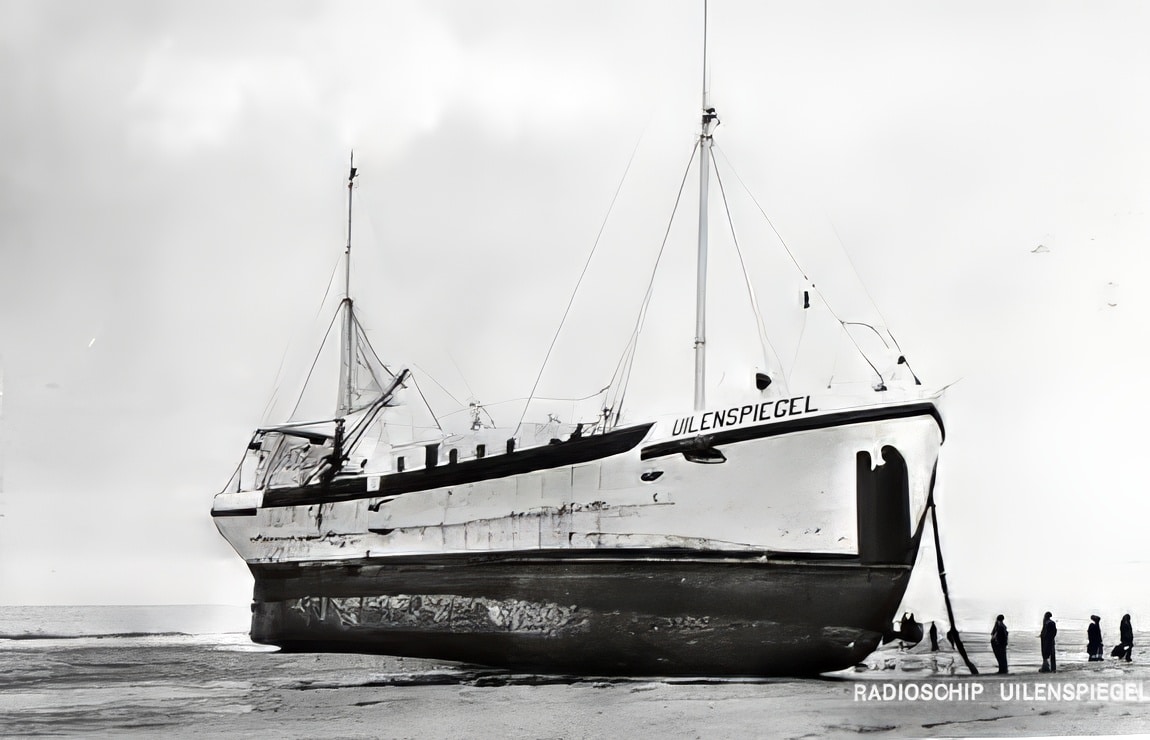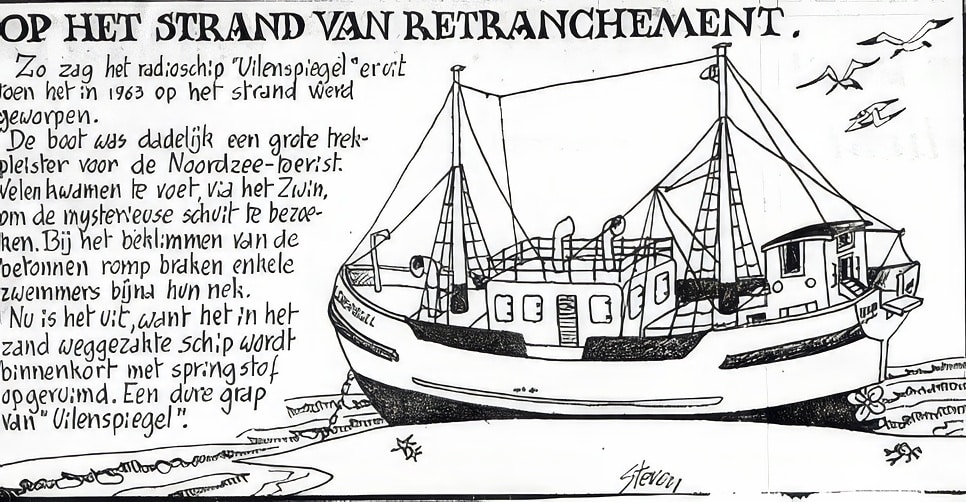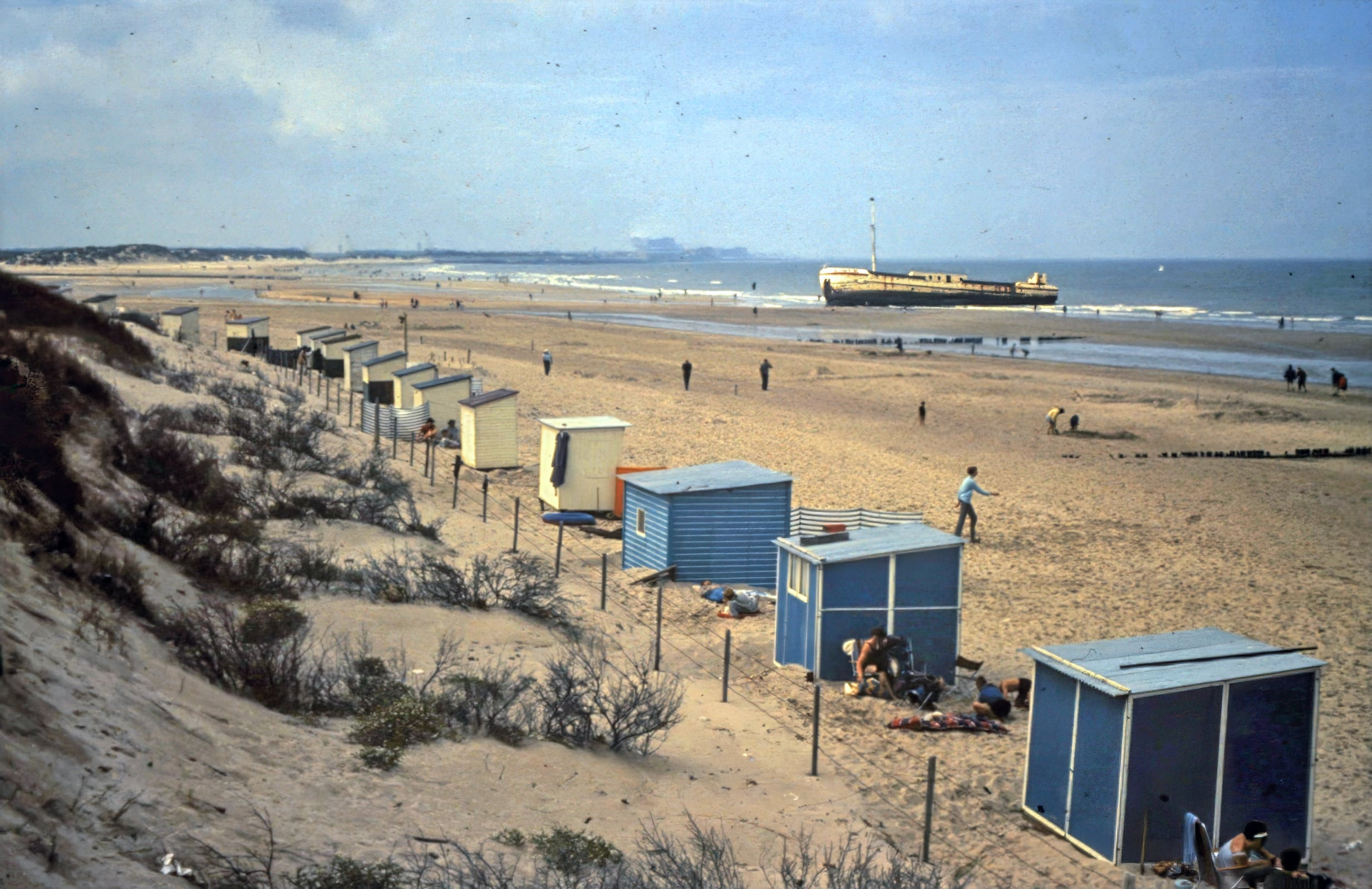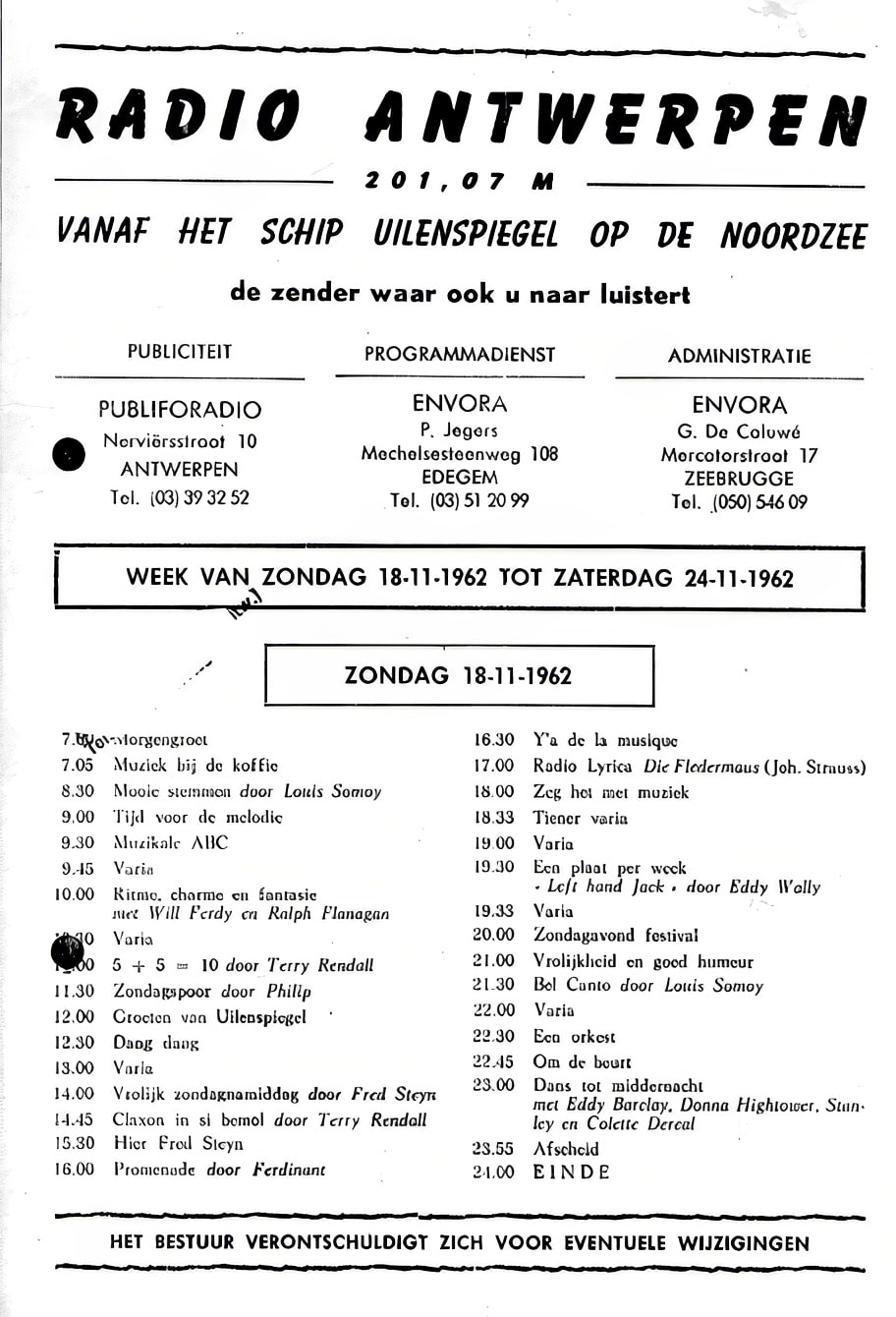
I have written about practically every offshore radio station in book form, but Radio Antwerp, from the Uilenspiegel, I left out. Over the years, many documents came to me and were added to the Uilenspiegel file. And such a file then goes back into the archive again and again. Thanks to follower Albert Pleijsier, I pulled out the file. He had a request for me to see if there were any programme listings of the station. But neither on the internet, nor on my external disk could such an overview be found.
Spending half an hour going through the archive file, I managed to find a few things, but also came across a newspaper cutting that caused wonder and where I wish to share its contents with my readers. A date and source were not mentioned and so the first thing that needed to be resolved was when the ‘publishing’ had taken place.
It was a clipping with a message on the back that took me further. Using a search engine, I typed in some keywords that led me to a hostage-taking by some Yugoslavs at their country’s consulate in Gothenburg, Sweden. They were members of the Croatian neo-fascist Oetasjl organisation and they wanted the release of their leader Hkrac from prison in Belgrade plus a cash sum of $100,000 from the Swedish government.
Rapid intervention by the Swedish police ended the occupation on the morning of 11th February 1971, and it was clear to me, through this report, that another report in the same, unknown newspaper, was also of the same date. The headline read: ‘Stranded radio ship gets blown up’. Let’s follow the full text of this notice: ‘The remains of the Belgian radio ship Uylenspiegel, stranded near Cadzand in 1962, will be blown up with dynamite and then cleaned up. The wreck poses a danger to the seawall and poses a danger to tourists clambering aboard at low tide. Several serious accidents have occurred in the process since the beaching. The Uylenspiegel broadcast pop music and advertising messages off the Belgian coast for four years. During a winter storm in 1962, the ship ran aground on the Zeeland-Flemish coast.’

I presume an apprentice journalist was active in making this report and any supervisor did not intervene properly. Obviously, the name of the station ship was wrong. In addition, the journalist wrote that the radio station had broadcast pop music and commercials for four years. How about 1962 pop music? No way. Amusing and mildly informative programmes for the whole family and certainly not music from the ‘pop music’ category that we were only introduced to on a limited basis from mid-1963 onwards. Moreover, during the period when Radio Antwerp was broadcast from the concrete transmission ship Uilenspiegel, advertising messages could be heard sporadically.
Above all, there was the huge error to read that the station had been broadcasting for no less than four years. This while Radio Antwerp began its broadcasts from the Uilenspiegel on the 15th of October 1962 and on the 16th of December that year the transmitting ship ran aground on the beach at Cadzand, off Retranchement. But the big question is whether in the spring of 1971, the planned blow-up of the Uilenspiegel was a success. No less than 22 years later, in June 1993, a message reached me from Zeeland revealing that remnants of the former concrete transmission ship could still be found, and on the beach near the village of the same name.

This was because it was important for beach visitors and sun worshippers to know that when the water was low, one’s feet could be torn open by sharp remnants of the Uilenspiegel. According to the article, these were remnants of the concrete blocks, with which the radio ship was weighted. In reality, they were remnants of the concrete ship.
To prevent unnecessary injuries, employees of the water board ‘t Vrije van Sluis’ drove wooden stakes in the preceding weeks to demarcate the remains of the wreck of the Uilenspiegel. The cost of the demarcation was borne by the water board and the municipalities of Sluis and Oostburg and was estimated at over 20,000 guilders in the PZC article.
The remnants of the Uilenspiegel were thus 3 decades of pure nostalgia, not only for Flemish and Zeeuws-Vlaanderen people but also for the many holidaymakers, who visited Zeeland in the summer and thus also went to have a look at the beach of Retranchement. Returning to the article in the PZG of 14 July 1993, it also became clear to me where that mistake came from that Radio Antwerp was on air for no less than four years. The unnamed journalist in question told that owner Georges de Caluwé had started broadcasting from the MV Uilenspiegel as early as 1958 and not, as real history tells us, on October 15th 1962, the first time he was on air with Radio Antwerpen from the radio ship.
It was two months later, 16 December 1962, that a severe north-westerly storm raged off the Belgian and Zeeuws-Vlaanderen coast and knocked the Uilenspiegel off her anchors. Nine crew members made every effort to save the ship but the force of the water prevailed and large waves of water also slammed into the ship’s hold. Finally, the crew members were disembarked with the help of a lifeboat and the Uilenspiegel stranded on the beach near Cadzand. Already in the following days, many hundreds of people from both Flanders and Zeeland came to watch the stranded broadcasting ship.
And during that long period, the necessary small and big accidents happened. For instance, a tourist lost his balance and fell into the space of the ship. An ambulance team was deployed to stabilise the injured person from the hold and transport him to a nearby hospital. It was eight years after the grounding that the said water board reached an agreement with the insurance companies and a sum of money was released to clear the ship from the beach.
Contractor Van Wijnen from the Zeeuws-Vlaanderen town of Groede was commissioned to demolish the ship. But complete demolition had become impossible partly because the Uilenspiegel had sunk deeper and deeper into the sandy bottom in the preceding years, with part of the ship’s keel even lying heavily in a layer of clay.

In 1973, as parts of the beach had been washed away, it appeared that the concrete debris had again become a visible problem. It was thought that it might be possible with the use of burners, among other things, to finally solve the problem. A few years later, a new beach head was constructed and the remains were encapsulated and large nets stretched over them. This was to prevent tourists from walking over the demarcated area anyway. Wind and water then caused large amounts of sand to wash over the remains.
Finally, in 1993, the wreck became clearly visible again and it was decided to fence it off with wooden posts. And so the remains of the radio ship remained a visible reminder of Radio Antwerp and Georges de Caluwé for decades.
@ Hans Knot maart 2025

